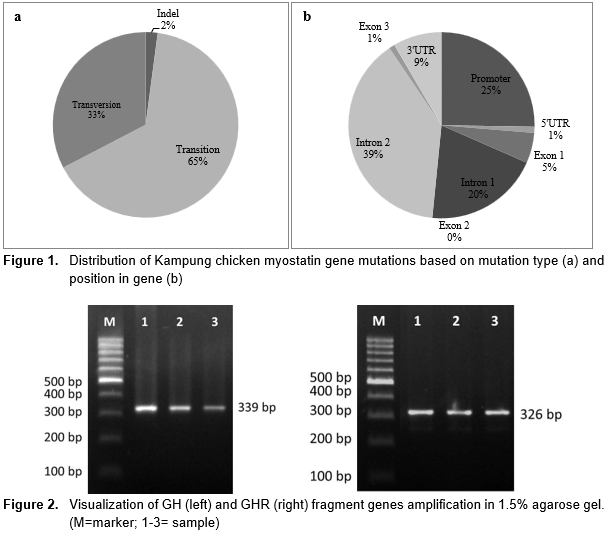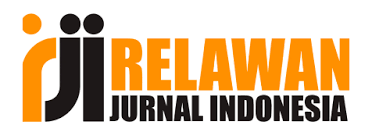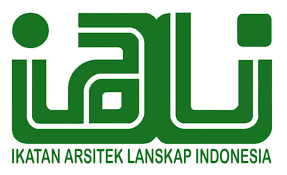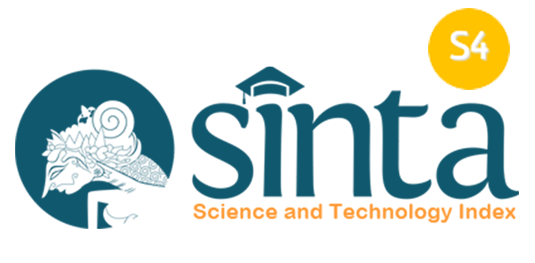Author Guidelines
GENERAL INFORMATION
- Manuscripts must be original, have not been published previously in any scientific journal, that manuscripts are not being submitted for publication elsewhere, and will not be submitted to any media during the review process, unless the authors have officially withdrawn the manuscripts from Composite: Jurnal Ilmu Pertanian.
- Composite: Jurnal Ilmu Pertanian uses Ithenticate to prevent any suspected plagiarism in the manuscripts.
- Manuscripts submitted are research topics which have no conflict with bioethical research.
- Manuscripts encompass a board range of agricultural research topics: agribusiness, agricultural development, agrotechnology, feed and animal nutrition, animal production and technology, animal breeding and genetics, landscape architecture, land rehabilitation and conservation, agricultural product technology, post-harvest technology, and plant protection.
- The journal is published 2 (two) times a year, i. e. February and July.
MANUSCRIPT FILE
- Manuscripts are written in Indonesia or English and used standard scientific usage.
- Manuscripts should be prepared in Microsoft Word format.
- Manuscripts should be typed using Times New Roman fonts at 11 points.
- Manuscripts should be typed single spaced. Manuscripts are prepared in A4 paper, margin on top side is 2.8 cm, and margins on left, right, and bottom sides are 2.5 cm.
- Total number of pages is 6-10.
- Manuscripts content should be arranged as the following order: Title, Name of the author(s) and their institutions, Abstract, Introduction, Methods (for Socio-Economic), Materials and Methods (for non Socio-Economic), Results and Discussion, Conclusion, Acknowledgment (if any), References.
- Manuscripts should be submitted electronically through online system: http://ejournal.uicm-unbar.ac.id/index.php/composite
CONTENT OF MANUSCRIPT
- Title (Judul) must be brief, clear, specific, and informative that reflects precisely the contents of the text. The maximum title length of 14 words (excluding conjunctions) is written in Indonesian and English. Capital letters are only used at the beginning of the first word of a title.
- Author's name (Penulis) is written in full.
- Name of the institution / institution (Institusi) is written for all authors accompanied by a complete address, while the correspondence author is equipped with e-mail.
- Abstract (Abstrak) is written both in English and Bahasa (for Indonesian texts), not exceeding 250 words, and in one paragraph. Abstracts are written in full describing the essence of the text which contains the background, methods, results, and conclusions, and contains all the keywords.
- Key words (Kata-kata Kunci) should be written in no more than 5 (five) words or phrases.
- Introduction (Pendahuluan) is written efficiently and describes the background, objectives and references that support it.
- Material and methods (Materi dan Metode) are written in complete and detailed so that the research is very possible to be repeated by other researchers, especially matters relating to materials, sampling, procedures, research design and data processing.
- Results and discussion (Hasil dan Pembahasan) contain the results obtained and the interpretations associated with the results of previous studies.
- Conclusion (Simpulan) are general (general) that describe the substance of the research results obtained, not a summary of results.
- Acknowledgement (Ucapan Terima Kasih) (if any) to person(s) or institution(s) who help the experiment should be stated. Authors should also state the name and the number of the project.
- References (Daftar Pustaka)
- The reference used is the primary library (journal, dissertation, thesis, and patent document) that is relevant, is not permitted to cite citations as references, such as: Morris in Miftah ......, and is not permitted to use the "Anonymous" library as a reference source.
- Using undergraduate theses (skripsi) as a reference is not allowed.
- Using the last 10 years reference is highly recommended.
- Library references from the internet are only allowed from sources that can be accounted for, such as journals, government or private agencies. Writing a library from the internet to include the date of data collection.
- Reference citations in the text: Gunawan (2014) or (Gunawan 2014); Sumantri et al. (2006) or (Sumantri et al. 1974); Jakaria & Johnson (2011) or (Jakaria & Johnson 2011).
- References should be listed alphabetically by the author(s) last name(s) and the year of publication with some examples of references are presented below:
Book
AOAC. 2005. Official Methods of Analysis of AOAC International. 18th ed. Assoc. Off. Anal. Chem., Arlington.
Jay JM, MJ Loessner, DA Golden. 2005. Modern Food Microbiology. 7th ed. Springer, New York.
Kopkhar SM. 2002. Konsep Dasar Kimia Analitik. Terjemahan: A Saptorahardjo. UI Press, Jakarta.
Mattjik AA, M Sumertajaya. 2002. Perancangan Percobaan dengan Aplikasi SAS dan Minitab. Jilid I. Edisi ke-2. Institut Pertanian Bogor (IPB)-Press, Bogor.
Journal
Sumantri C, A Farajallah, U Fauzi, JF Salamena. 2008. Keragaman genetik DNA mikrosatelit dan hubungannya dengan performa bobot badan pada domba lokal. Med Pet. 31:1-13.
Hess BW, GE Moss, DC Rule. 2008. A decade of developments in the area of fat supplementation research with beef cattle and sheep. J Anim Sci. 86(E. Suppl.):E188–E204.
O’Neil MR, GP Lardy, LP Reynolds, JS Caton, ML Johnson, KA Vonnahme. 2006. Effects of estradiol (E2) and linseed meal (LSM) on caruncular angiogenic factors in ovariectomized (OVX) ewes. Biol Reprod. 75(Suppl. 1):132 (Abstr.).
McDowell CM, LH Anderson, JE Kinder, ML Day. 2000. Duration of treatment with progesterone and regression of persistent overian follicles in cattle. J Anim Sci. 78 (In Press).
Article in a book
Launchbaugh K, JA Pfister, S Lopez-Ortiz, R Frost. 2007. Body Condition Affects Blood Alkaloid and Monoterpene Kinetics and Voluntary Intake of Chemically- Defended Plants by Livestock. In: K E Panter, TL Wierenga, JA Pfister (Eds). Poisonous Plants: Global Research and Solutions. CAB International, Wallingford. p.394-400.
Sulandari S, MSA Zein, S Paryanti, T Sartika. 2007. Taksonomi dan Asal Usul Ayam Domestikasi. Dalam: K Diwyanto, SN Prijono (Eds.). Keragaman Sumber Daya Hayati Ayam Lokal Indonesia: Manfaat dan Potensi. Edisi Pertama. LIPI Press, Jakarta. Hal. 7-24.
Thesis/Disertation
Yani A. 2007. Analisis dan simulasi distribusi suhu udara pada kandang sapi perah menggunakan computational fluid dynamics (CFD). Tesis. Sekolah Pascasarjana, Institut Pertanian Bogor, Bogor.
Sumiati. 2006. Rasio molar asam fitat: Zn untuk menentukan suplementasi Zn dan enzyme phytase dalam ransum berkadar asam fitat tinggi. Disertasi. Sekolah Pascasarjana, Institut Pertanian Bogor, Bogor.
Electronic publication
IUCN (International Union for Conservation of Nature and Natural Resources). 2007. The IUCN Red List of Threatened Species: 2001 Categories and Criteria (Version 3.1). http://www.iucnredlist.org/ [8 Oktober 2007].
TABLES, FIGURES, AND GRAPHS
Table :
- The table must provide clear, complete and independent information (providing complete and clear information even though it is read without text).
- Title in the form of short, clear and informative sentences about table data. The title for socio-economic research must be accompanied by the location and time of conducting research. Capital letters are only used at the beginning of the first word of a title, are placed above the table, and are numbered in Arabic numerals.
- The dividing line is made in horizontal form (horizontal) consisting of three lines, namely two at the top (column headings) and one at the table cover, and not allowed to use vertical lines on the table.
- Data is equipped with standard deviation (SD), standard error (SE) or the like to describe the variation and distribution of data.
- Writing information on the significance of the data statistically, using the phrase "different superscripts on the same row/column shows significant/very significant (P<0,05)/(P<0,01)".
- Every abbreviation or symbol used in the table is always given a statement below the table as a brief explanation of the abbreviation or symbol.
Example of Table :
Figure and graph :
- Title should be brief and clear, located under the Figure or Graph. Only the initial word is capitalized and numbered with Arabic number.
- Symbols and description of Figure and Graph should be defined in title that would give a complete information and could stand alone.
- Figures should be prepared and the types are readable at the full-page width (17 cm wide). Use Times New Roman font types only. A minimum type size of 8 points (after reduction) should be used. Please also remove unnecessary backgrounds and grid lines from graphs.
- Figures must have good resolution. Preferred format for figures are Word, JPEG, and PDF. Minimum resolution is 300 dpi for color and grayscale figures and 600 dpi for line art.
Examples of Figure and Graph:













